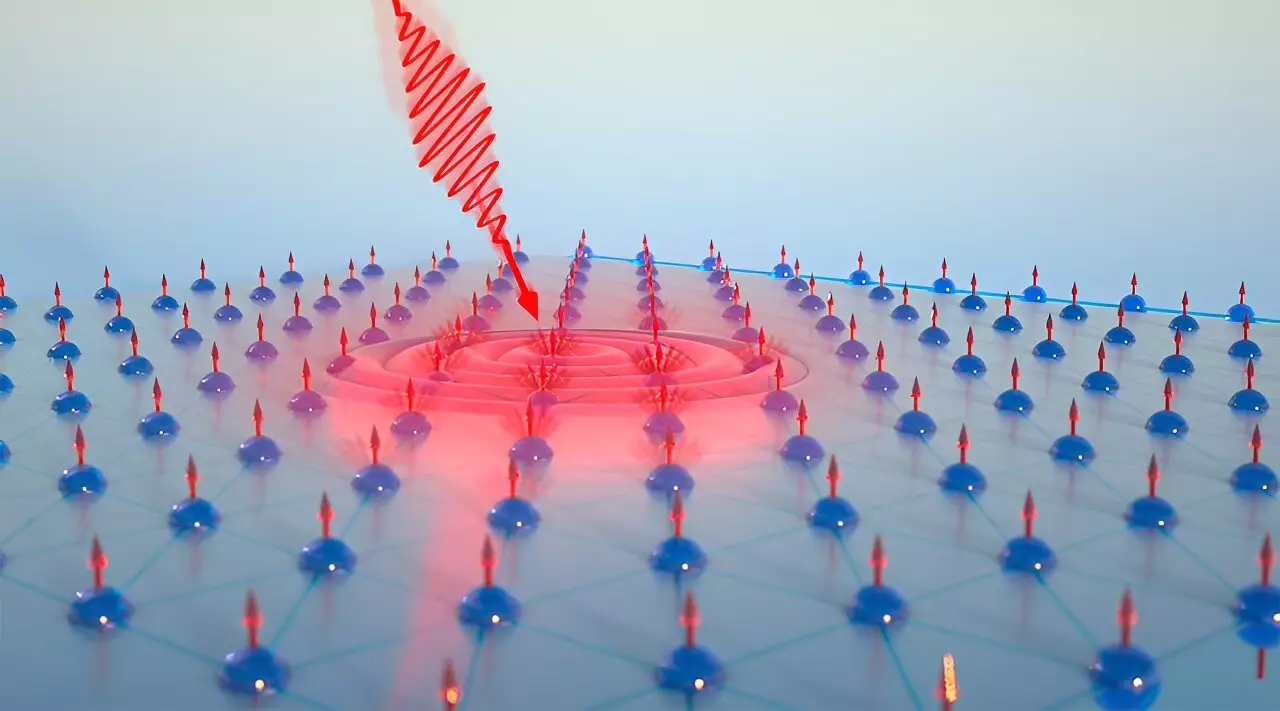In a landmark study at the University of Chicago’s Pritzker School of Molecular Engineering, researchers have made significant headway in developing innovative optical memory solutions. This endeavor focuses on the material manganese bismuth telluride (MnBi2Te4), which has rapidly revealed itself to be a pivotal player in the quest for faster and more energy-efficient data storage. As technology races forward, the need for new methods to store and process information is clear, and this research is a promising step in harnessing the physical properties of advanced materials to fulfill those needs.
The groundbreaking aspect of MnBi2Te4 lies in its surprising magnetic responses to light. This optical responsiveness indicates that lasers might be employed to encode information directly into the magnetic states of this material, creating an intriguing new paradigm for data storage. The investigation was initially driven by a desire to delve into the molecular complexities of MnBi2Te4; however, the unexpected discovery of its unique characteristics has opened avenues for practical applications that were previously unimagined. As Shuolong Yang, the lead researcher, emphasized, “This really underscores how fundamental science can enable new ways of thinking about engineering applications very directly.”
The focus of the study has transitioned from theoretical predictions to actual exploration of how MnBi2Te4 can serve as an efficient optical memory medium. By utilizing sophisticated spectroscopy techniques, the research team was able to observe the electron behavior within this material in real time, uncovering crucial insights that could revolutionize how we approach memory devices.
One of the critical elements of this research involves the interaction and competition of two distinct electron states within MnBi2Te4. On one hand, there exists a topological state known for its potential in quantum data encoding; on the other, there is a light-sensitive state that appears better suited for the storage of optical data. This competitive dynamic has been a focal point for the researchers as they sought to understand why MnBi2Te4 had been so elusive in demonstrating strong topological properties.
By employing advanced techniques such as time- and angle-resolved photoemission spectroscopy, in collaboration with magneto-optical measurements, the researchers gained valuable insights into the behavior of the electrons. Notably, their findings revealed a quasi-2D electronic state that inhibits the ideal properties expected from a topological material. Yang noted, “There is a completely different type of surface electrons that replace the original topological surface electrons.” This revelation illustrates that even negative traits can be transformed into beneficial applications when thoroughly understood.
Implications for Future Optical Memory
The implications of discovering that the quasi-2D electronic state possesses strong magnetism-photon coupling are profound. While it may not support sensitive quantum data, this coupling is precisely what the researchers believe is necessary for creating a more efficient optical memory system compared to conventional electronic memory devices. Yang’s team is set to conduct further experiments aimed at manipulating the properties of MnBi2Te4 using lasers, with the goal of optimizing this coupling for practical applications.
Additionally, understanding the delicate balance between the competing electron states is crucial for enhancing MnBi2Te4’s capabilities as a magnetic topological insulator. By carefully tuning this balance, researchers hope to maximize the material’s potential for quantum data storage. This ongoing investigation not only stands to elevate the functionality of MnBi2Te4 but could also inform broader advancements in the field of quantum information science.
The discovery of unexpected properties in MnBi2Te4 represents a remarkable leap forward in materials science, with profound implications for the future of data storage technology. By uncovering the intricate relationships between light, magnetism, and electron states within this material, researchers are laying the groundwork for a new generation of optical memories that promise far greater efficiency than traditional methods. This study showcases the power of interdisciplinary research, merging physics, engineering, and materials science to unlock new possibilities in technology, thereby facilitating advancements in both data processing and quantum computing. The journey has just begun, but the prospects are undeniably exciting in a world increasingly reliant on efficient and innovative technological solutions.


Leave a Reply